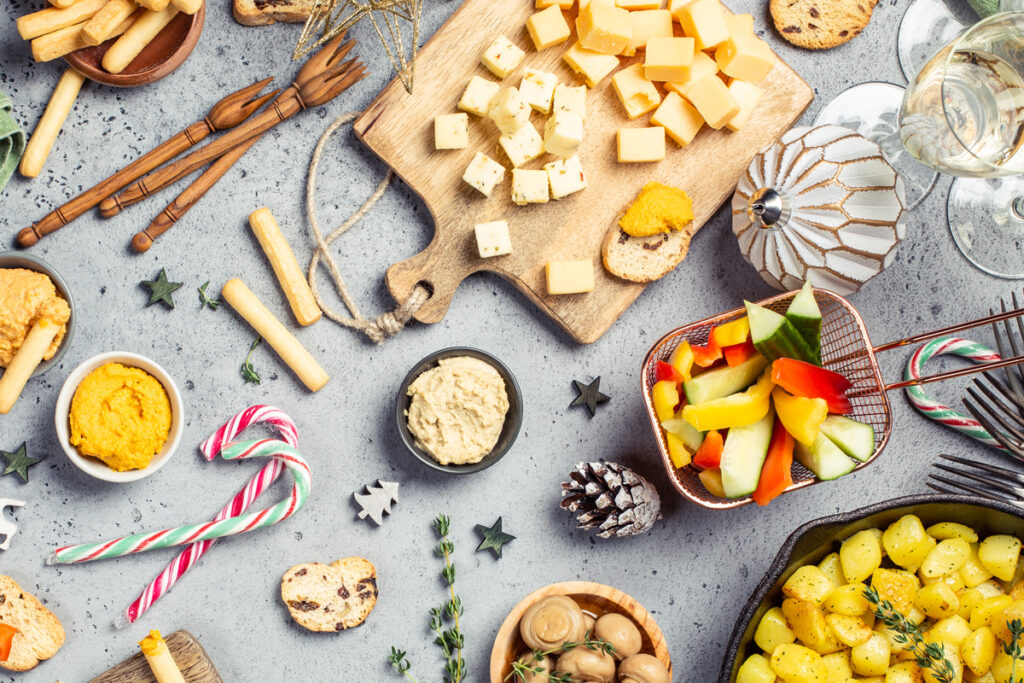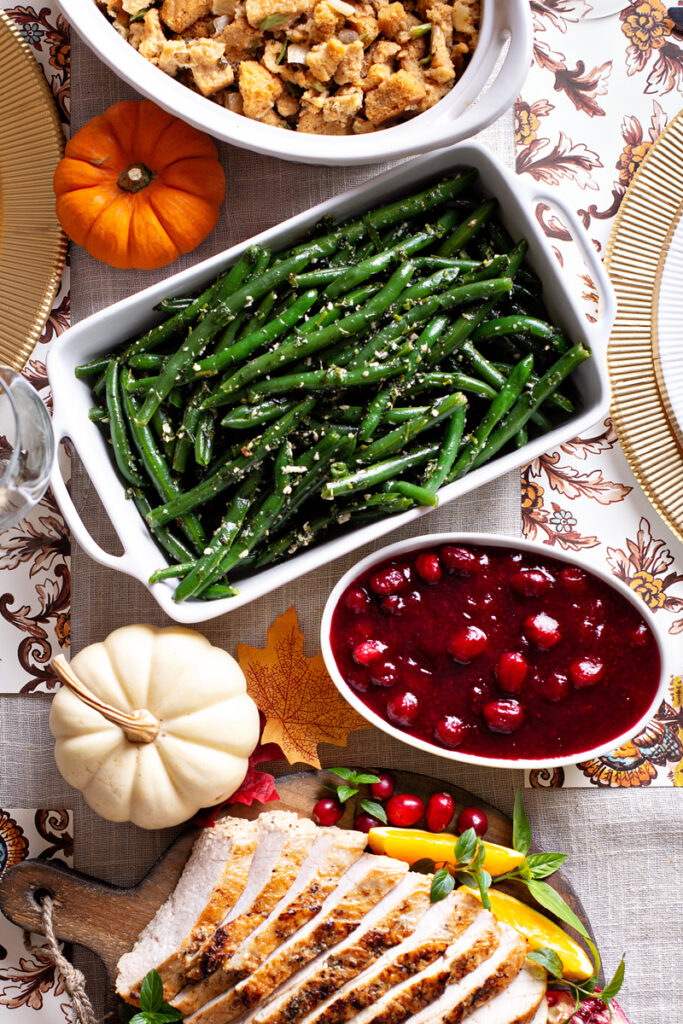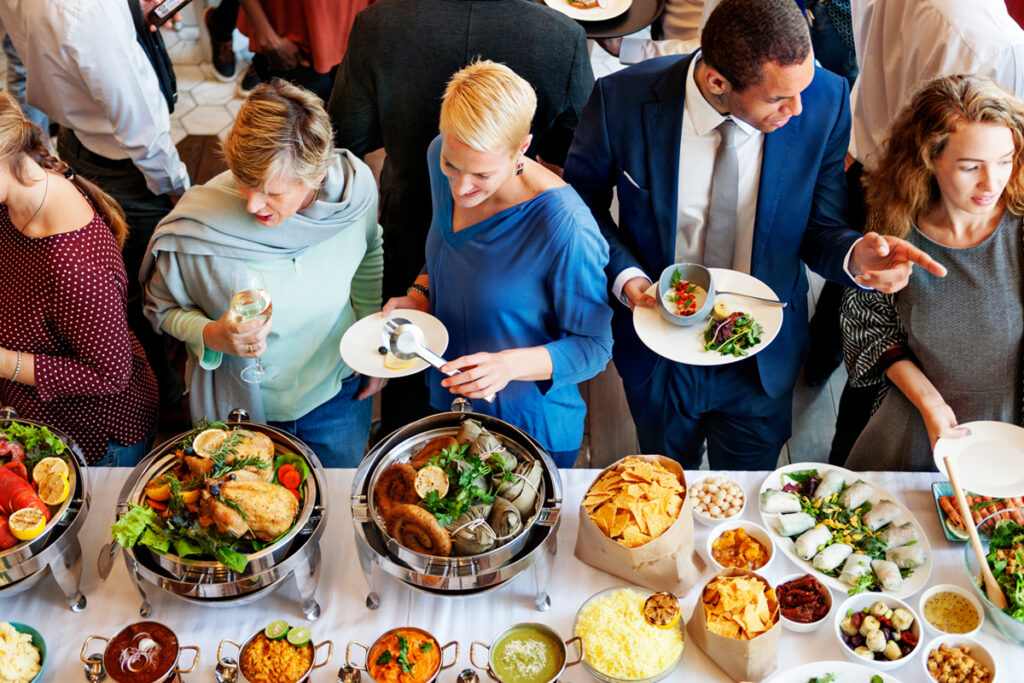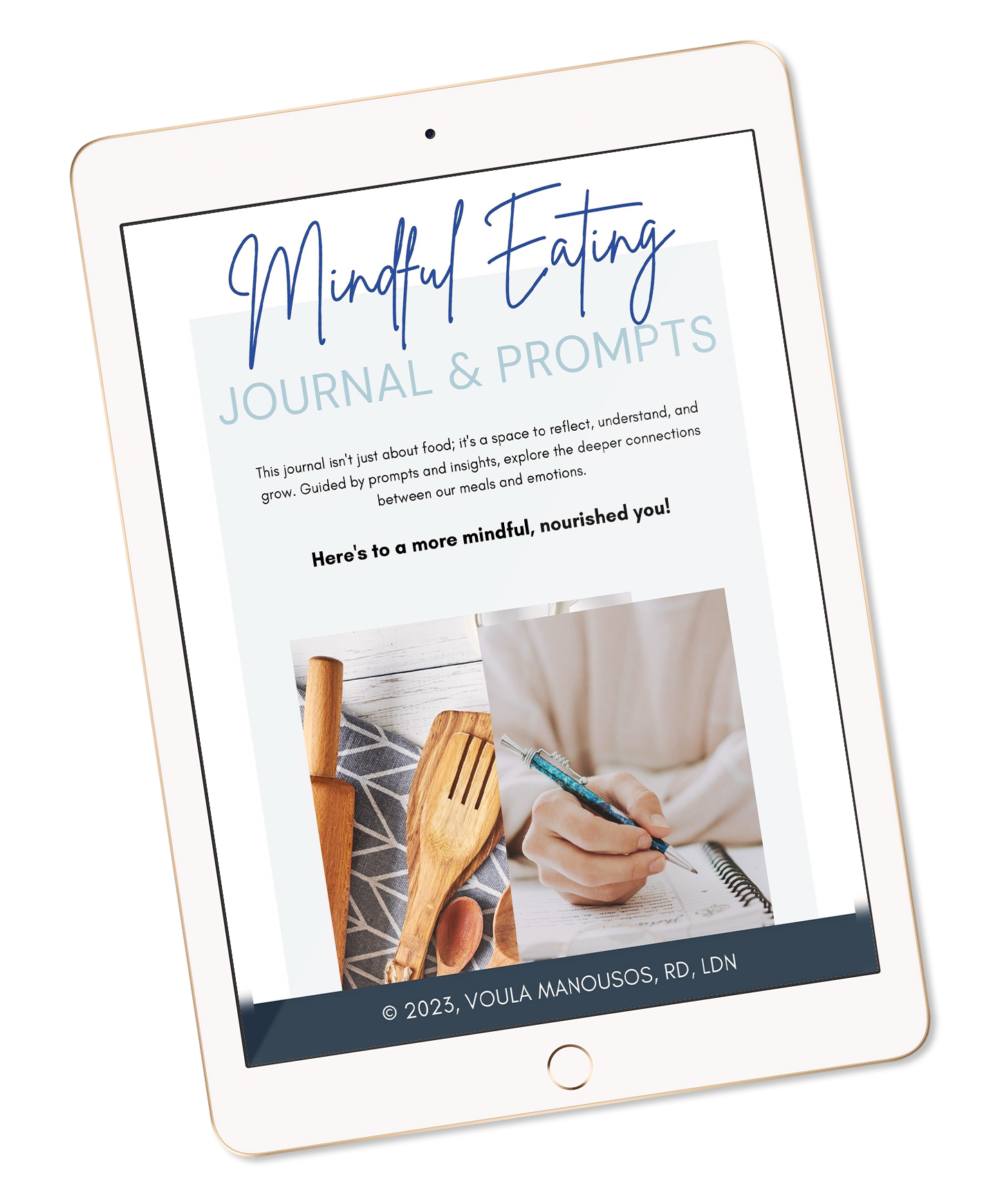Have you ever found yourself at a holiday party, plate piled high with festive treats, wondering how a second helping became your new normal? You’re not alone. During the holiday season, ‘portion distortion’ is a common challenge.
Generous servings of delicious food blur the lines between hunger and indulgence, leading us to consume more than usual. As we approach joyous gatherings and tables laden with homemade favorites, it’s easy to lose sight of portion sizes.
The festive spirit often brings with it larger-than-life serving sizes, from heaping helpings of grandma’s stuffing to oversized slices of pumpkin pie.
Whether you’re learning about portion distortion for the first time or simply trying to keep that winter weight at bay, this post is for you.

Understanding Portion Distortion
When it comes to eating, how much is too much? This simple question is at the root of the ‘portion distortion’ conversation.
Portion distortion refers to the phenomenon where the size of food servings has progressively increased over the years, leading us to perceive a larger serving size as the norm. This shift is not just about the actual serving size or physical quantity of food but also about our perception and understanding of what constitutes a ‘normal’ serving.
Several studies have highlighted this trend, showing a notable increase in portion sizes both in packaged foods and in dining establishments. For example, research published in the American Journal Of Public Health indicated a significant rise in average portion sizes over the past two decades, which has been linked to increasing rates of obesity. This correlation is a clear indicator that our plates are growing, and so are the potential health risks associated with overeating.
The holiday season amplifies this issue.

Traditional holiday meals are often characterized by abundance and variety, making it challenging to gauge appropriate portion sizes. A study published in the National Library of Medicine found that average calorie intake can increase substantially during holiday periods, primarily due to larger portion sizes and the availability of calorie-dense foods.
Moreover, the social and emotional aspects of holiday eating further complicate our ability to stick to reasonable portion sizes. Family traditions, cultural expectations, and the sheer joy of sharing meals can lead us to consume more than we might in less festive settings. The visual appeal of holiday spreads, coupled with the desire to indulge in seasonal specialties, often overrides our normal eating habits.
This phenomenon of larger food portions during the holidays isn’t just about indulging in an extra slice of pie; it’s about a broader shift in our eating patterns. As we prepare for the festive season, it’s important to recognize how these patterns emerge and what we can do to maintain a balanced approach to holiday eating.

The Contrast between Food Portions: Then and Now
Thinking back to holiday meals of the past, it’s not just the styles or the recipes that have changed; it’s the portion sizes too. Over the years, there’s been a noticeable shift in how much food is considered ‘enough.’
To put it into perspective, let’s consider a classic holiday dish like turkey.
In the 1960s, people would typically eat the recommended serving size for a single portion of meat which was about 3-4 ounces, about the size of a deck of cards. Today, it’s not uncommon to find holiday plates with double or even triple that amount. Similarly, the serving sizes for side dishes has grown proportionally. A single serving of mashed potatoes, once scooped with a modest-sized spoon, now often fills a substantial part of the plate.
Historical data from various sources, including nutrition guides and cookbooks, reveal this upward trend. For instance, the average size of a dinner plate has increased significantly over the decades. In the 1960s, dinner plates typically measured about 9 inches in diameter. Now, it’s common to see plates that are 12 inches or more, subtly encouraging larger servings.
This increase in portion sizes doesn’t just apply to our plates. It extends to the recipes themselves. A quick comparison of classic holiday recipes over the decades shows an increase in the quantities of ingredients, resulting in larger final dishes. What was once a recipe meant to serve six might now be considered just right for four.

The Psychology of Portion Size
When it comes to holiday eating, it’s not just about what’s on our plates but also how our minds perceive it. The psychology of portion size plays a crucial role, especially during festive times when larger servings are the norm. Two key factors influencing our perception are visual cues and social norms.
Visual cues come in many forms. The size and color of the plate, for instance, can greatly impact how much we serve ourselves. Larger plates tend to make the actual portion size look smaller, leading us to fill them with more food. The same goes for the serving sizes of utensils. Research has shown that we’re likely to serve ourselves more when using larger spoons. Then there’s the presentation of the food itself. A well-garnished, colorfully presented dish can entice us to take larger serving sizes, simply because it’s more appealing.
Social norms during the holidays also play a part.
There’s an unspoken rule that feasting is expected, and saying ‘no’ to second helpings can sometimes feel awkward. Family traditions and cultural expectations often emphasize the importance of eating together and enjoying plentiful meals. This can lead to a ‘more is better’ mentality, making it hard to gauge when enough is really enough.
Mindful eating is a powerful tool in navigating these psychological aspects. It involves being fully present during meals, savoring each bite, and listening to your body’s hunger and fullness cues. During the holidays, try to eat slowly and engage your senses. Notice the flavors, textures, and aromas of your food. This can help you appreciate the meal more deeply and recognize when you’re satisfied, reducing the likelihood of overeating.
For a more in-depth look at mindful eating, check out this blog post with a complimentary, downloadable Mindful Eating Journal.
Now that we’ve got a handle on the mind tricks portion sizes can play on us during the holidays, let’s roll up our sleeves and get into some real-life strategies. These aren’t just tips; they’re your toolkit for keeping portions under control while still enjoying the festivities.

7 Strategies for Managing Smaller Portions During the Holidays
As we gear up for the joy of holiday feasting, remember, that you don’t have to sacrifice your favorite foods to manage your portion size. Here are 7 easy-to-implement strategies that can help you enjoy the season’s delights while keeping portions in check:
Choose Smaller Plates: It’s amazing how a smaller plate can naturally guide us to more reasonable portion sizes. Give it a try and see how it changes your meal!
Serve Yourself Mindfully: When filling your own cup or plate, take a moment to really think about your choices. Strike a balance with veggies, proteins, and starchier foods for a well-rounded and satisfying meal.
Savor the Flavor: Transform each meal or snack into an experience. Challenge yourself to identify different ingredients in each dish. This approach not only enhances your culinary enjoyment but also naturally slows down your eating pace, which helps you feel satisfied with smaller portions.
Selective Seconds: Before heading back for more calories, pause and check in with yourself. Are you still hungry, or just tempted? If you do go for seconds, pick the foods you love most.
Don’t Skip Meals: A common diet mistake is skipping meals earlier in the day. Eating regular meals keeps your energy steady and prevents overindulgence later on.
Stay Hydrated: Keeping water close by helps distinguish between hunger and thirst. Plus, it’s great for your overall health!
Practice Gratitude for Your Food: Take a moment to appreciate the food in front of you. Gratitude can transform your eating experience and help you enjoy each bite mindfully.
By incorporating these simple yet effective tips, you can navigate holiday meals with confidence, enjoying all the flavors of the season without succumbing to portion distortion.
Remember, the holidays are about celebrating and enjoying time with loved ones and being mindful of portions is just one way to ensure you have a healthy and happy festive season.
The Challenge of Multiple Servings at Holiday Gatherings

Acknowledge Social Influences: Recognize that it’s common to feel pressured to eat more when others around you are doing so. Remind yourself that it’s perfectly acceptable to decline additional servings if you’re satisfied.
Set Your Pace: Eat at a pace that feels comfortable for you. If others are reaching for seconds, it doesn’t mean you have to. Listen to your body’s cues and only take more if you truly feel hungry.
Plan Your Plate: Before the meal, decide what and how much you want to eat. Having a plan can help you stick to your portion goals and avoid overeating, even when faced with multiple options.
Engage in Mindful Eating: Set a goal to put your utensil down after each bite and thoroughly chew. Use this moment to really listen to your body’s signals. Are you still hungry, or are you eating out of habit?
Find Support: If possible, team up with a friend or family member who also wants to be mindful about portion sizes. It’s easier to stick to your goals when you have someone doing it with you.
Offer to Help with Serving: Being in control of serving can help manage portion sizes, both for yourself and others. It also keeps you engaged and less focused on eating.
By adopting these strategies, you can gracefully navigate the allure of multiple servings at holiday gatherings. It’s about finding a balance that allows you to savor the festive flavors without overindulging.
Conclusion
As we wrap up, remember that the holiday season is a time for joy, celebration, and delicious food. While portion distortion can be a challenge, it’s one that we can confidently navigate. By choosing smaller plates, serving ourselves mindfully, eating slowly, being selective with seconds, not skipping meals, staying hydrated, and practicing gratitude for food, we can enjoy the festivities without overindulgence.
The key is to strike a balance between savoring the flavors of the season and listening to our body’s cues. It’s about enjoying festive meals mindfully, recognizing the social and psychological influences at play, and making conscious choices that align with our health and happiness. This holiday season, let’s embrace the joy of eating with a mindful approach to portion sizes, ensuring our celebrations are both delightful and health-conscious.

Ready to enjoy the holidays without the worry of portion distortion?
Follow me on Facebook and Instagram and subscribe to my YouTube channel for more tips and insights.
If you’re looking for personalized guidance to manage your weight mindfully, check out my weight management nutrition services here. Together, we can create a plan that fits your lifestyle and helps you celebrate the holidays healthily and happily. Let’s make this festive season about balance and joy in eating!
Let’s create a plan that fits your lifestyle and helps you celebrate the holidays healthily and happily. This year, make this festive season about balance and joy in eating!






